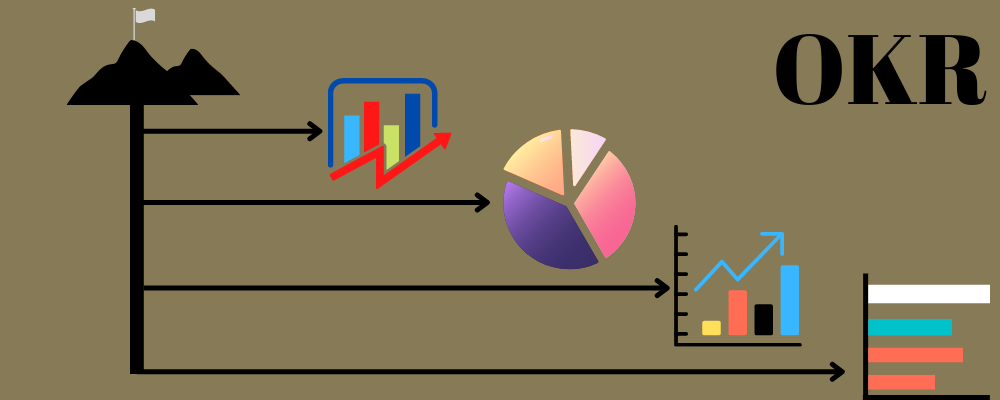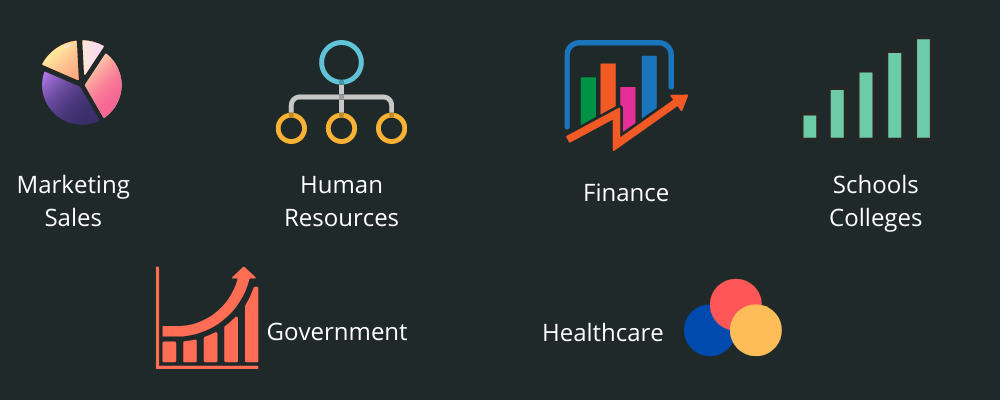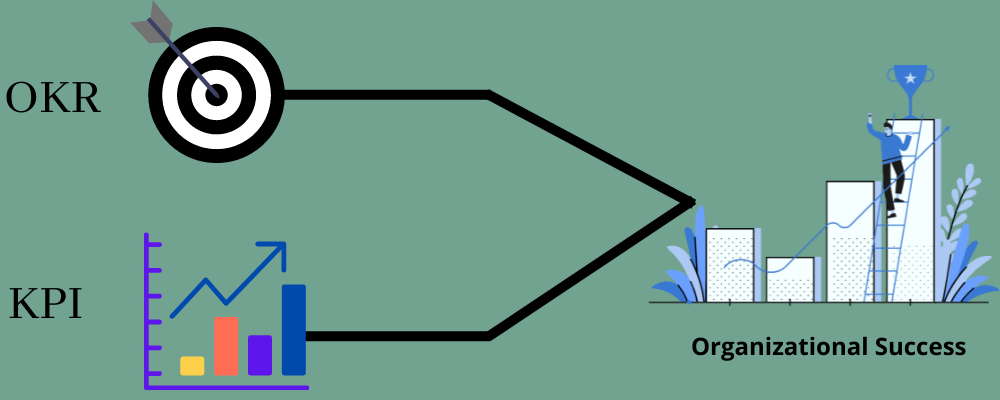OKR vs. KPI is an ongoing debate. People often don’t clearly understand their difference and how to use them effectively to measure their efforts.
That said, both OKR and KPI are effective ways to monitor and measure the performance and success of an individual, team, organization, or activity towards achieving a goal.
No matter which of the two approaches you take, measuring performance is crucial to improve.
But if you don’t set your objectives or review the set objectives over the decided time, you may miss an opportunity to improve your strategies and understand how your efforts are paying off.
This is why team leaders, product managers, business analysts, and other decision-makers need to figure out the best method of measuring performance based on what they want to achieve.
In this article, I’ll compare OKR vs. KPI to unleash their differences, the best ways to utilize them and help you decide which will be better for your organization.
Let’s begin!
But first,
Why Is Measuring Performance Important?
Learning from your successes and failures is key to making improvements not only at the individual level but also organizational level.
You might have made some new year resolutions when the year began. Did you accomplish them? How far have you come against those goals?
Similarly, teams are also assigned some goals to achieve. Could you trace the performance of your efforts? Did your team meet the goal?
The accurate answer to these questions can be answered by employing approaches like OKR and KPI. By measuring performance with these methods, you can achieve:
- Employee and organization growth
- Business goal alignment
- Overall organizational performance
- Improved organizational culture
Let’s finally discover what they are and how they differ.
What Is OKR?

Objectives and Key Results (OKR) refer to a goal-setting framework that organizations, teams, and individuals can use to define their goals and measure outcomes.
Andrew Grove, a Hungarian-American businessman, Intel CEO, and engineer, is attributed for developing OKR, who introduced this framework to Intel while he worked there. OKR became more famous when Google’s co-founder Larry Page adopted it in the platform’s mission to organize world data.
OKRs have two main parts – an objective & key results.
- Objective: It is a concrete, significant, and clearly-defined goal that should inspire the organization or individuals working to achieve the goal. Initiatives can also support the objective with activities and plans.
- Key results: They must be measurable that decision-makers and planners can use to measure the success of their efforts towards achieving the goal. You can assign the results any numerical value in percentage or rate them on a scale of 0-10 or 0-100.
Types of OKRs
- Aspirational OKRs: These OKRs are set knowing that you won’t achieve all of them but some, and while you are at it, you will do really well.
- Committed OKRs: These are the goals you are expected to accomplish.
- Strategic OKRs: They focus on long time goals of a company and are set annually by decision-makers.
- Tactical OKRs: They are lower-level objectives set for teams working on different products.
Benefits of OKR
- Ambitious and inspirational: OKRs make people ambitious by inspiring every team member to give their best.
- Agility: Setting a defined objective for a specific timeline gives you direction and lets you adapt to changes quickly. It also offers you the opportunity to perform better, keeping in mind the deadline, being disciplined, and re-evaluating your efforts.
- Easy to understand: With the straightforward language of OKRs, they are easy to understand by everyone on the team.
- Boosts engagement: Most OKRs are defined by teams. This engages everyone in the goal-setting process and enables them to understand the overall strategy of the organization better.
- Transparency: Everyone in the company, irrespective of their positions, can view OKRs, which offers transparency across the organization. It also makes them aware of where the company is heading in.
What Is KPI?

Key Performance Indicator (KPI) is used by organizations to measure the performance and/or success of a program, project, product, activity, employee, organization, and other initiatives over a definite time interval.
It has four components:
- Measure: It defines the things to monitor and measure.
- Target: It is the desired value of the Measure. For example, you might want to target a 10% revenue increase for your organization. It must be realistic as well as challenging.
- Data source: A data source is from where you obtain data required for your KPIs. Examples of data sources are databases, CRM software, Google Analytics, etc.
- Frequency: It represents how often you will extract data from the source and view the KPIs. Based on your business requirements and measured metrics, you can set the frequency to yearly, quarterly, monthly, weekly, or daily.
Types of KPI
- Leading KPIs: These KPIs are early indicators of success and help determine if you are going on the right track with your project to achieve the desired outcomes. They focus on the project output—examples of leading KPIs: User adoption rate, retention rate, etc., for a web-based product.
- Lagging KPIs: These KPIs are final indicators of your initiative’s success, focused on the project outcome. Example: Sales revenue.
Benefits of KPIs
- Measures performance: KPIs help you measure the performance of your individual employees, teams, and the organization as a whole.
- Improves performance: With clear data on performance, you can set objectives and motivate your employees and teams to improve their performance and achieve their goals.
- More employee engagement: When the goals are set, employees can actively engage in activities and perform better.
- Boosts morale: Defining KPIs for employees can help boost their morale, make them more accountable for their actions, and improve their performance.
- Detect patterns over time: You can measure your performance over a period of time to analyze if you have made progress and track patterns of improvements.
- Closes learning gaps: With clear information about performance, it becomes easy to work on your weaknesses to learn and improve.
Examples of OKR

OKRs are more specific to teams and individuals than KPIs. You can apply them to your entire organization or just an employee or chosen projects. They are flexible to set and are more competitive to measure each individual’s success.
Some of the examples of OKR can be:
#1. Sales OKR
Objective: Increase revenue by 15%
Key result 1: Increase 100 new quality leads
Key result 2: Boost customer retention to 85%
Key result 3: Acquire 50 new customers
#2. Marketing OKR
Objective: Increase website traffic by 20%
Key result 1: Publish 30 blogs in a month
Key result 2: Add 1000 more subscribers
Key result 3: Increase Instagram and Twitter followers by 10%
#3. Support Team
Objective: Increase customer satisfaction rate to 9/10
Key result 1: Enhance average response time to 2 min throughout the week
Key result 2: Work on 80% of customer feedback in the first month
Examples of KPI

Here are some of the examples of KPIs to help you better understand how to utilize them effectively in your business.
#1. KPIs for Sales and Marketing
- Content: Content quality, time spent on articles, content production, etc.
- Social media: Follower count, engagement rate, profile views, etc.
- Leads: Number of new leads, retention rates, cost per lead, etc.
- Traffic: Website organic traffic and paid traffic
- Profit: Conversions, expenses, sales revenue, net profit, etc.
#2. KPIs for IT
- Product quality
- Shipped products
- Software response time
- Customer churn rates
- ROI
#3. KPIs for Employees
- Performance
- Punctuality
- Attendance
- Communication
OKR vs. KPI: Similarities
- OKRs and KPIs both help increase the productivity of employees and the company as a whole.
- They offer clear measures of progress and performance and help align everyone in your team to your business goals.
- Companies of all sizes leverage both OKRs and KPIs to help achieve their goals.
- They are required to be quantifiable, clear, and specific.
- The “K” in both the terms stands for “key”, implying that you must focus on some important aspects to improve performance.
- Both KPIs and OKRs are applicable for the entire company, teams, individual employees, and projects.
OKR vs. KPI: Differences
Let’s now compare OKR vs. KPI on various points:

#1. Goal-Setting
KPIs and OKRs differ significantly in terms of goal-setting. OKRs are more of a journey (process), while KPIs are the destination (output).
OKRs have more ambitious, bold, and competitive goals that may not be achieved initially due to the high standards set.
However, the goals of OKRs are not unachievable. It’s just that they may require a little more time, adjustments, and patience to work towards achieving them. In addition, OKRs require you to specify the exact outcomes you aim to accomplish.
On the other hand, KPIs have attainable and realistic metrics that are set based on an existing project. They are measurable and traceable but don’t require you to necessarily define the exact outcomes you wish for.
#2. Effectiveness
Since OKRs are more inspirational and ambitious, they motivate teams to perform exceptionally instead of fulfilling the minimum target.
You can set high standards for targets, and if you achieve the most of them, it still can be considered successful. And if you achieve all of it 100%, it means your team is probably too cautious, and you must set higher, more ambitious goals.
On the other hand, since KPIs are more realistic and measurable, they must be achieved by teams and individuals assigned to accomplish a specific task. Missing out on them is not generally an option if you are to succeed in your task.
#3. The Direction of Flow
OKRs generally need several communication layers and focus on building objectives based on values and needs. It can follow the top-down, bottom-up, or side-by-side approach.
- With the top-down model, the company aims to share its strategy and vision with different departments and employees.
- The bottom-up model allows teams to share their ideas with leaders in order to validate the organizational strategy.
- With the side-by-side model, the company aims to align departments across common OKRs while increasing collaboration.
On the other hand, KPIs follow only a top-down approach where the metrics are based on the company strategy. They begin at the organization’s executive level and travel down the corporate hierarchy level by level.
#4. Transparency
OKRs are shared with everyone in an organization to enable employees to align with the goals and work towards accomplishing them. This method of measuring performance promotes transparency throughout the organization.
Additionally, OKRs involve employees and teams in creating strategies and execution. Hence, sharing OKRs with everyone is necessary.
In contrast, KPIs are kind of more restricted due to many reasons. They might be more specific to the department and less concerning to other people in the organization.
KPIs are set to evaluate the performance of a department like sales, IT, etc. They measure the current performance of the results produced by OKRs.
#5. Performance Reviews
OKRs must not be included during performance reviews. Since they are more ambitious, it’s not always possible to accomplish most or all of it. They could sometimes look unrealistic to people or teams but at the same time motivate them to do their best and go near the goal at least.
Comparatively, KPIs are most often included during performance reviews for teams and employees when relevant. Since they are realistic and achievable, they clearly show the efforts of teams and individuals towards achieving the goal.
As a result, these metrics have the power to influence important organizational activities like promotions, raises, the need for training, skill development, etc.
#6. Time Limit

OKRs are timeboxed. They are goals set for a specific time period, such as monthly, quarterly, semi-annually, or annually. These metrics may not last forever, and a business may set another goal for another period.
An OKR’s key results are generally narrow, with a target no matter how ambitious and big the objective is. They are also set, reset, or changed more frequently compared to that of KPIs.
However, OKRs can continue to be the focus beyond the defined period if the goal is related to a company’s strategy, vision, or products.
On the other hand, a KPI is a top-class metric used by senior executives and leaders to measure the business’s overall health. These KPIs could be sales revenue, customers, net profit, etc.
KPIs are less likely to change frequently, although they might change in the longer run. In addition, they can be used as an OKR’s key results sometimes.
Other differences:
- OKRs are used to inspire and execute, whereas KPIs are used to monitor and measure the results.
- While OKRs are goal-oriented with multiple metrics known as key results, KPIs are metrics with a specific target.
- OKRs may include KPIs as one of the metrics for key results. This means KPIs can be a subset of OKRs.
| OKRs | KPIs |
| It stands for Objectives and Key Results.
It is a goal-setting framework that helps organizations acquire their goals with measurable results. |
It stands for Key Performance Indicators.
It measures the performance of individuals, teams, or projects by tracking progress and work through a measurement system. |
| Its goals are bold, ambitious, and action-oriented, set to make some significant improvements. | The metrics are realistic, achievable, and result-oriented, set to succeed at a task. |
| It’s timeboxed, such as monthly, yearly, etc.
Its goals can change from time to time with progress. |
It is generally calculated on an ongoing basis.
Its metrics change less frequently, but the targets can. |
| OKRs are directional and future-focused.
It may follow a top-down, bottom-up, or side-by-side model for the flow of direction. |
KPIs are a result of an ongoing process.
It follows the top-down approach only. |
| OKRs are more transparent to everyone in the team. | KPIs are less transparent and can be more restrictive. |
| It must not be included during performance reviews. | It is generally included during performance reviews. |
OKR vs. KPI: Which Is Better?
Choosing between the two performance measurement approaches is entirely dependent upon your organization’s goals and needs.
Nevertheless, if you are still confused about what to choose among them, here are some examples to help you understand what you need more.
Example 1: If you want to change your complete strategy, using OKRs could be better. This will help you set goals to transform your business strategy and achieve your big, ambitious goals. In addition, these goals have more depth to enable stretching them further and help you be more creative when planning your strategy to accomplish them.
Example 2: If you want to improve your previous project, using KPIs could be better. These metrics are straightforward and specific, acting as a system to monitor and measure your current projects and processes.
OKR vs. KPI: Can They Work Together?
Yes, OKRs and KPIs can definitely work together. And if done, it’s more effective.
You can use OKRs to specify your measurable goal to be accomplished to make improvements. Now, you can make those improvements with the help of KPIs that come with certain metrics to be achieved.

You can spot the connection between OKRs and KPIs here.
To attain the best results, you can use KPIs as one of the key results of OKRs since KPIs are specific, achievable, and measurable.
As a result, you can progress consistently towards your goal while monitoring your business performance, from your teams and employees to the organization as a whole.
Example: There are cases when a KPI may require an OKR to solve a specific problem. It can happen when you’re lagging behind a KPI metric. At this time, you will require an OKR having specific goals to improve your project.
You might also want to combine OKR and KPI if you want to make your KPI target more measurable and specific, like achieving a certain ROI or revenue.
Best Practices When Using OKRs and KPIs
OKRs
- Set your goals for the short term, probably monthly or quarterly. While creating the goals, define important ones for your business that are attainable within the specified term.
- List down some specific objectives. Keep it simple; start with enterprise-level OKRs and gradually add levels for your teams and individuals.
- Ensure your employees support the set OKRs. If they don’t follow, the OKR implementation won’t succeed.
- Simplify metric monitoring and reporting using some automated tools.
- Don’t create OKRs with no clarity into the activities of other business aspects.
- Don’t use this framework if you are growing slowly or trying to maintain your current offerings; use KPIs instead. OKR is better for fast-growing organizations.
KPIs
- Ensure your KPI metrics are achievable but challenging.
- Set a limited number of KPIs that are vital to truly help you figure out if you are on the right track.
- Set a clear context for every KPI by comparing it to your target.
- Review KPIs periodically and update when needed. You can reassess the performance metrics by discussing your strategies with your team.
- Avoid using spreadsheets to monitor KPIs as they can increase the complexity while managing the process.
- Simplify monitoring and tracking using an automated tool.
Conclusion 🧑💻
Monitoring and measuring the performance of your employees, teams, projects, and the organization as a whole is essential to making improvements. It will help you achieve your long-term and short-term goals and succeed more in your business.
OKR and KPI are both effective strategies to measure performance and can be chosen by any organization, team, or individual. They will introduce you to your weak and strong points so you can fix your weaknesses and enhance your strengths more.
Hence, choose one among OKR vs. KPI based on the goals or metrics you want to measure. But if you could utilize them together in your business, it would be more effective to measure the overall performance while aligning everyone with your business goals.
You may now look at some tools to create KPI dashboards.



